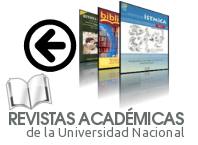Gone with the wind: Do we know the impact that produce wind energy causes on flying vertebrates of Costa Rica?
DOI:
https://doi.org/10.15359/rca.52-1.14Keywords:
Bat fatalities, bird fatalities, clean energy, conservation politics, Neotropical wind farms, Tilaran Mountain ridgeAbstract
The clean energy industry has been growing in Costa Rica, especially wind energy, during the last years. However, at least for the best of our knowledge, published scientific information about diversity, and collision rates, upon bats and birds in wind farms of Costa Rica is not-existent. In this manuscript we highlight the importance of establish biological monitoring programs in the wind farms, to determinate changes in the diversity of flying vertebrates, as well to evaluate the impact of wind towers upon the local and regional biodiversity. We suggest to public and private actors involving in wind energy production and conservation in Costa Rica to work together in order to answer the questions formulated in this manuscript as a priority, and eventually mitigate effectively any potential threat on our biodiversity. The development of research and politics related with those issues is critical to make correct decisions in relation with the wind energy future of the country in armony with nature.References
Ambientico. (2013). Problemática energética costarricense y cómo enfrentarla. Ambientico, 257-258, 2-4.
Arnett, E. B. & Baerwald E. F. (2013). Impacts of wind energy development on bats: implications for conservation. En Adams, R. A. & Pederssen, S. C. (Eds.). Bat evolution, ecology, and conservation: (435-456). New York: Springer.
Arnett, E. B., Brown, K., Erickson, W. P., Fiedler, J. K., Hamilton, B. L., Henry, T. H.,…Tankersley, R. D. (2008). Patterns of bat fatalities at wind energy facilities in North America. Journal of Wildlife Management, 72(1), 61-78. doi: 10.2193/2007-221.
Atienza, J., Martín, I., Infante, O., Valls, J. & Domínguez. J. (2012). Directrices para la evaluación del impacto de los parques eólicos en aves y murciélagos (versión 3.0). Madrid: SEO/Birdlife.
Barros, M. A. S., Gastal de Magalhaes, R. & Rui, A. M. (2015). Species composition and mortality of bats at the Osório Wind Farm, southern Brazil. Studies on Neotropical Fauna and Environment, 50(1), 31-39. doi: 10.1080/01650521.2014.1001595.
Bats and Wind Energy Cooperative. (2010). A Generalized Estimator for Estimating Bird and Bat Mortality at Wind Energy Facilities: Why One Is Needed and What It Will Do. Recuperado de http://www.batsandwind.org/
Beston, J. A., Diffendorfer, J. E., Loss, S. R. & Johnson, D. H. (2016). Prioritizing avian species for their risk of population-level consequences from wind energy development. PLoS ONE, 11(3), e0150813. doi: 10.1371/journal.pone.0150813
Briones-Salas, M., Lavariega, M. C. & Moreno, C. E. (2017). Effects of a wind farm installation on the understory bat community of a highly biodiverse tropical region in Mexico. PeerJ, 5(May), e3424. doi: 10.7717/peerj.3424
Chaves, L., Chaves-Campos, J. & Sánchez, C. (2012). Arenal-Monteverde (CR006). En Sandoval, L. & Sánchez, C. (Eds.). Important Bird Areas in Costa Rica. San José: Unión de Ornitólogos.
Chinchilla, S. (2016, 21 de abril). Costa Rica duplica generación de energía con viento en 5 años. La Nación. Recuperado de http://www.nacion.com/nacional/servicios-publicos/Pais-duplica-generacion-energia-viento_0_1556044410.html
Díaz-Bolaños, R. M. (2006, Junio). El desarrollo de los proyectos de energía eólica en Costa Rica (1979-2005). I Congreso Iberoamericano de Ciencia Tecnología Sociedad e Innovación CTS+1, México D. F. Recuperado de www.oei.es/historico/memoriasctsi/mesa7/m07p02.pdf
ICE. (2015). Foro Iberoamericano Energías Renovables No Convencionales. Recuperado de https://www.grupoice.com/wps/wcm/connect/12a7d75f-c615-4587-b3c4-d6d89ee2bc1d/Eolico+JavierBonilla+ForoER.pdf?MOD=AJPERES.
Johnson, J. B., Ford, W. M., Rodrigue, J. L. & Edwards, J. W. (2012). Effects of acoustic deterrents on foraging bats (Reporte N.º NRS-129). Newtown Square: USDA Forest Service.
Johnson, D. H., Loss, S. R., Smallwood, K. S. & Erickson, W. P. (2016). Avian fatalities at wind energy facilities in North America: a comparison of recent approaches. Human–Wildlife Interactions, 10, 7-18.
Kerns, J., & Kerlinger, P. (2004). A Study of Bird and Bat Collisions at the Mountaineer Wind Energy Facility, Tucker County, West Virginia: Annual Report for 2003. Recuperado de Bats and Wind Energy Cooperative: http://www.batsandwind.org/pdf/Kerns%20and%20Kerlinger_2006.pdf
MacSwiney, M. C., Clarke, F. M. & Racey, P. A. (2008). What you see is not what you get: the role of ultrasonic detectors in increasing inventory completeness in Neotropical bat assemblages. Journal of Applied Ecology, 45, 1364-1371. doi: 10.1111/j.1365-2664.2008.01531.x
Nicholls, B. & Racey, P. A. (2009). The aversive effect of electromagnetic radiation on foraging bats-a possible means of discouraging bats from approaching wind turbines. PLoS ONE, 4(7), e6246. doi:10.1371/journal.pone.0006246
Obama, B. (2017). The irreversible momentum of clean energy. Science, 355(6321), 126-129. doi: 10.1126/science.aam6284
Obando, A. V. (2007). Biodiversidad de Costa Rica en Cifras. Santo Domingo de Heredia: Editorial INBio.
Ontario Ministry of Natural Resources. (2011). Bats and bat habitats: guidelines for wind power projects. Ontario: Ministry of Natural Resources.
Portilla, R. (2013). Planificar el desarrollo eléctrico, limitar la demanda, proteger el ambiente con fuentes renovables y generar más electricidad privada. Ambientico, 257-258, 06-10.
Powlesland, R. (2009). Impact of wind farms on birds: a review. Wellington: Publishing team, Department of Conservation.
Red Latinoamericana para la Conservación de los Murciélagos (RELCOM). 2016. Lineamientos de evaluación de impacto ambiental sobre murciélagos por plantas de energía eólica en Latinoamérica y el Caribe. Recuperado de http://www.relcomlatinoamerica.net/images/PDFs/RELCOMEolicasEIA.pdf
Rodríguez-Herrera, B.; Ramírez-Fernández, J. D.; Villalobos-Chaves, D. & Sánchez, R. (2014). Actualización de la lista de especies de mamíferos vivientes de Costa Rica. Mastozoología Neotropical, 21(2), 275-289.
Rodríguez-Durán, A., Feliciano-Robles, W. (2015). Impact of wind facilities on bats in the Neotropics. Acta Chiropterologica, 17(2), 365-370. doi: 10.3161/15081109ACC2015.17.2.012
Snyder, B., & Kaiser, M. J. (2009). Ecological and economic cost-benefit analysis of offshore wind energy. Renewable Energy, 34(6), 1567-1578. doi: 10.1016/j.renene.2008.11.015
Soto, M. (2017, 24 de abril). Biólogos proponen medidas para mitigar afectación de eólicas en murciélagos. La Nación. Recuperado de http://www.nacion.com/vivir/ambiente/Biologos-proponen-mitigar-eolicas-murcielagos_0_1628837163.html
UOCR. (2016). Vigésima cuarta actualización de la lista de aves de Costa Rica. Recuperada de http://uniondeornitologos.com/?cat=24
Villegas-Patraca, R., Macias-Sánchez, S., MacGregor-Fors, I. & Muñoz-Robles, C. (2012). Scavenger removal: bird and bat carcass persistence in a tropical wind farm. Acta Oecologica, 43, 121-125. doi: 10.1016/j.actao.2012.06.004
Zimmerling, J. R., Pomeroy, A. C., d'Entremont, M. V. & Francis, C. M. (2013). Canadian estimate of bird mortality due to collisions and direct habitat loss associated with wind turbine developments. Avian Conservation and Ecology, 8(2), 10.doi: 10.5751/ACE-00609-080210
Downloads
Published
How to Cite
Issue
Section
License

This work is licensed under a Creative Commons Attribution-NonCommercial-ShareAlike 4.0 International License.


















